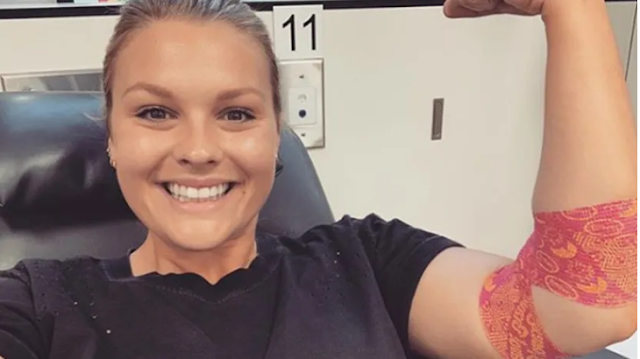Home and Away star Sophie Dillman shares ‘excruciating’ endometriosis struggle
Sophie Dillman, an actress, has been open about her “excruciating” struggle with endometriosis.
Sophie, one of the stars of Channel 7’s Home and Away, has called her illness’s discomfort, symptoms, general lack of awareness, and frequent misdiagnoses “frustrating.”
One in nine women, including Sophie, 30, have the crippling condition.
The hallmark of endometriosis is the growth of tissue resembling uterine lining outside of the womb, which can occasionally spread to other parts of the body.
The stigma surrounding the ailment, like many other women’s health issues, prevents many women from discussing it or getting help from a doctor.
Sophie defines endometriosis as “line that is comparable to the lining of our uterus, that sort of tissue developing outside of the uterus, and it may grow anywhere,” in her own words.
According to her, “it’s been found in the brain, spinal column, lungs, liver, and in everyone – male and female.”
Endometriosis, according to the actress, may range from being “very painful” to a person “not knowing” they have it.
Unlike the average sufferer, Sophie was lucky with her diagnosis – learning at 21 that she had the condition.
“I had experienced incredibly painful periods and irregular periods throughout my entire teenage years,” she says.
Sophie said she ‘lost’ her period “a number of times” during her teen years because of the amount of exercise she did.
She recalls, “I would faint and repeatedly vomit. It was pretty irregular, but when I got them, they were really heavy, really terrible.”
The actress complained of “terrible bloating” that made it impossible for her to fit into her clothes and gave her “very bad leg discomfort and edema.”
Sophie found herself prepared for her first laparoscopy after deciding to see a doctor, then a gynaecologist, to consider birth control, which is how she eventually acquired her diagnosis.
Surgical options
A laparoscopy – where a tiny camera is sent into the pelvic region through a small incision – aims to investigate and “remove any of the tissue that’s causing pain”.
Sophie has had three such surgeries and says she has “a lot of tissue that they can’t remove because it’s in the lining of my various organs”.
She adds that the procedures don’t help her and that it’s “exhausting, uncomfortable, and sometimes awkward and it sucks.”
It appears that I will have to do it consistently for the rest of my life, she says.
Results
It may take some time following a laparoscopy to determine whether the procedure was successful, according to the ambassador for Endometriosis Australia.
She admits, “To be honest, not all the procedures I’ve had seemed like they had benefit,” but she “seems to be functioning reasonably well” following her third procedure.
She claims that this isn’t always the case though.
Along with surgical options, Sophie says birth control can “potentially stop the growth of the endometriosis tissue”.
“A lot of the time people actually don’t know they’ve had endometriosis if they’ve been on the pill since they were really young,” she says.
“So you come off it and periods are excruciating.
“All of a sudden all this tissue growth happens and all that sort of stuff.”














No comments